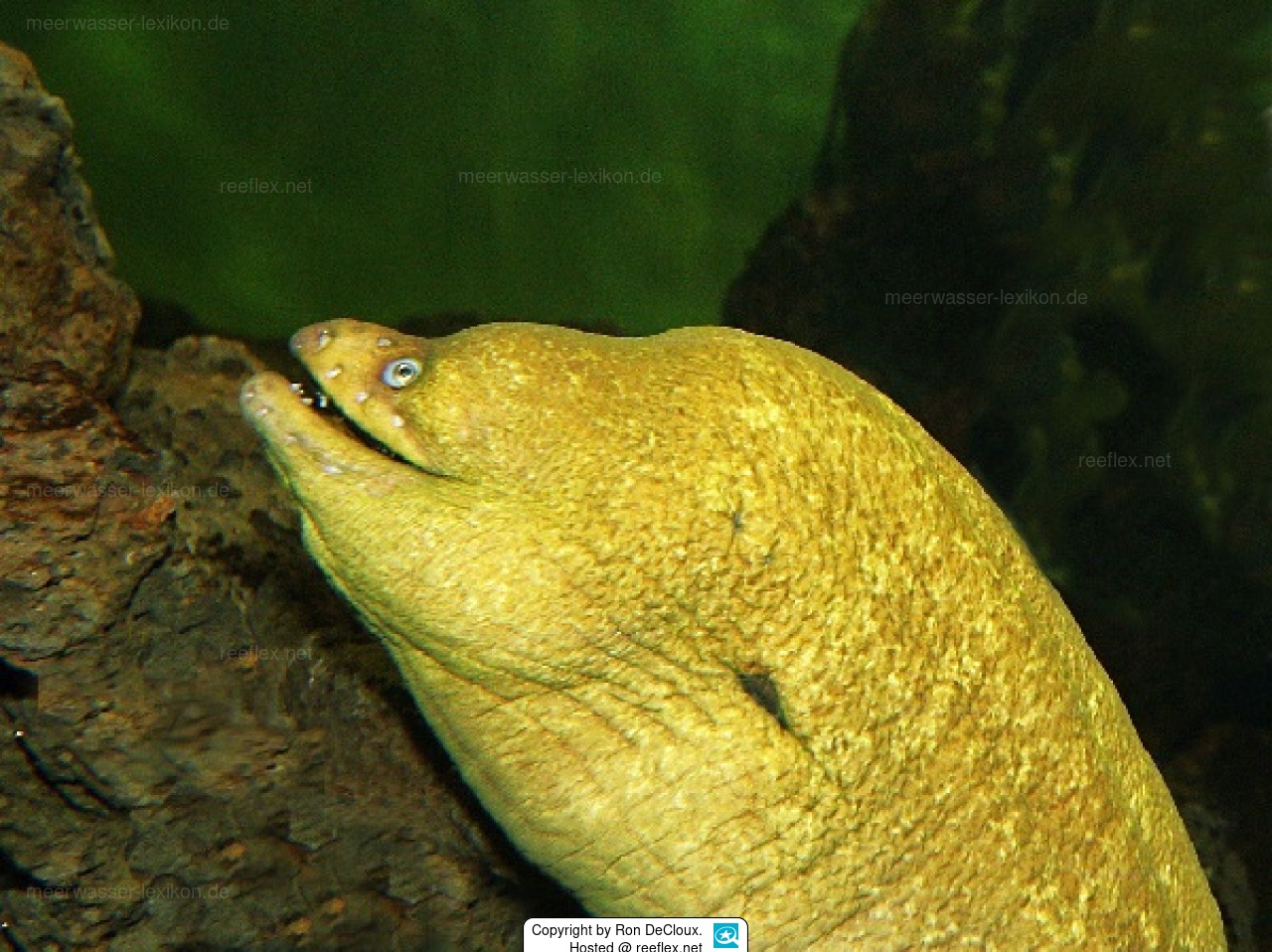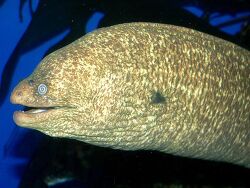Info
(Ayres, 1859)
Distribution
Eastern Pacific: Point Conception in California, USA to southern Baja California in Mexico.
Also known from the Galapagos Islands.
California moray eels are long slim snakelike fish. They sport bodies light to dark brown or green color. Unlike most fishes moray eels have no pelvic fins, pectoral fins, or gill covers. Most fish breathe by closing and opening their gill covers to force water over their gills. Without gill covers moray eels must constantly open and close their mouths to breathe, so they appear to be gasping for breath. Moray eels, during the day, sit in crevices with only their heads protruding. At night they prowl across the reef looking for octopuses and small fishes. These unusual fish don’t have scales. A yellowish mucus covering the eel’s skin protects it from being abraded by the rough surfaces.
Synonym:
Muraena mordax Ayres, 1859,
Classification: Biota > Animalia (Kingdom) > Chordata (Phylum) > Vertebrata (Subphylum) > Gnathostomata (Superclass) > Pisces (Superclass) > Actinopteri (Class) > Anguilliformes (Order) > Muraenidae (Family) > Muraeninae (Subfamily) > Gymnothorax (Genus) > Gymnothorax mordax (Species)
Jumping guard
A jumping guard prevents (nocturnal) fish from jumping out.
Wrasses, blennies, hawkfishs and gobies jump out of an unprotected tank in fright if their night rest is disturbed, unfortunately these jumpers are found dried up in the morning on carpets, glass edges or later behind the tank.
https://www.korallenriff.de/en/article/1925_5_Jump_Protection_Solutions_for_Fish_in_the_Aquarium__5_Net_Covers.html
A small night light also helps, as it provides the fish with a means of orientation in the dark!
Distribution
Eastern Pacific: Point Conception in California, USA to southern Baja California in Mexico.
Also known from the Galapagos Islands.
California moray eels are long slim snakelike fish. They sport bodies light to dark brown or green color. Unlike most fishes moray eels have no pelvic fins, pectoral fins, or gill covers. Most fish breathe by closing and opening their gill covers to force water over their gills. Without gill covers moray eels must constantly open and close their mouths to breathe, so they appear to be gasping for breath. Moray eels, during the day, sit in crevices with only their heads protruding. At night they prowl across the reef looking for octopuses and small fishes. These unusual fish don’t have scales. A yellowish mucus covering the eel’s skin protects it from being abraded by the rough surfaces.
Synonym:
Muraena mordax Ayres, 1859,
Classification: Biota > Animalia (Kingdom) > Chordata (Phylum) > Vertebrata (Subphylum) > Gnathostomata (Superclass) > Pisces (Superclass) > Actinopteri (Class) > Anguilliformes (Order) > Muraenidae (Family) > Muraeninae (Subfamily) > Gymnothorax (Genus) > Gymnothorax mordax (Species)
Jumping guard
A jumping guard prevents (nocturnal) fish from jumping out.
Wrasses, blennies, hawkfishs and gobies jump out of an unprotected tank in fright if their night rest is disturbed, unfortunately these jumpers are found dried up in the morning on carpets, glass edges or later behind the tank.
https://www.korallenriff.de/en/article/1925_5_Jump_Protection_Solutions_for_Fish_in_the_Aquarium__5_Net_Covers.html
A small night light also helps, as it provides the fish with a means of orientation in the dark!







 Ron DeCloux, USA
Ron DeCloux, USA























































